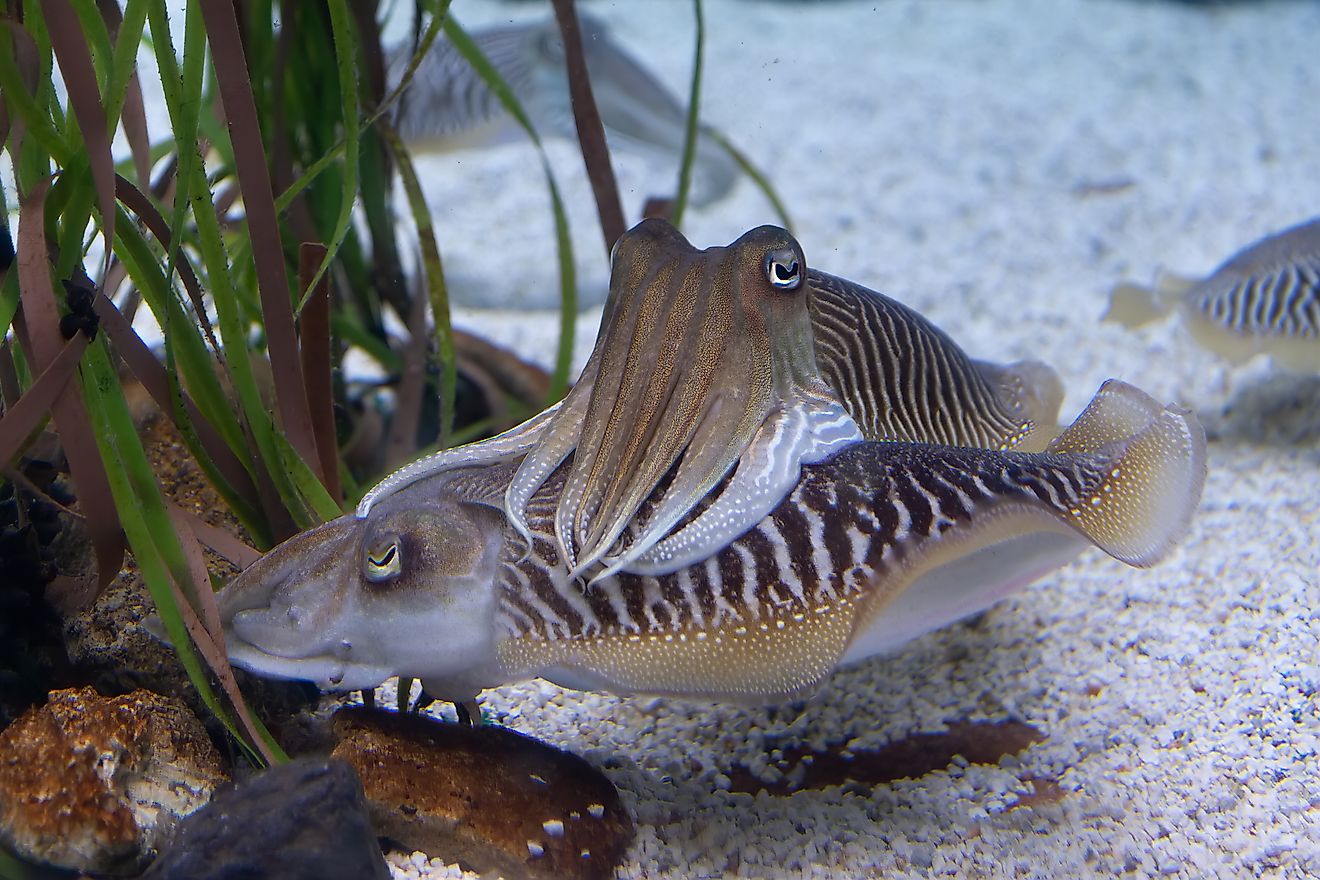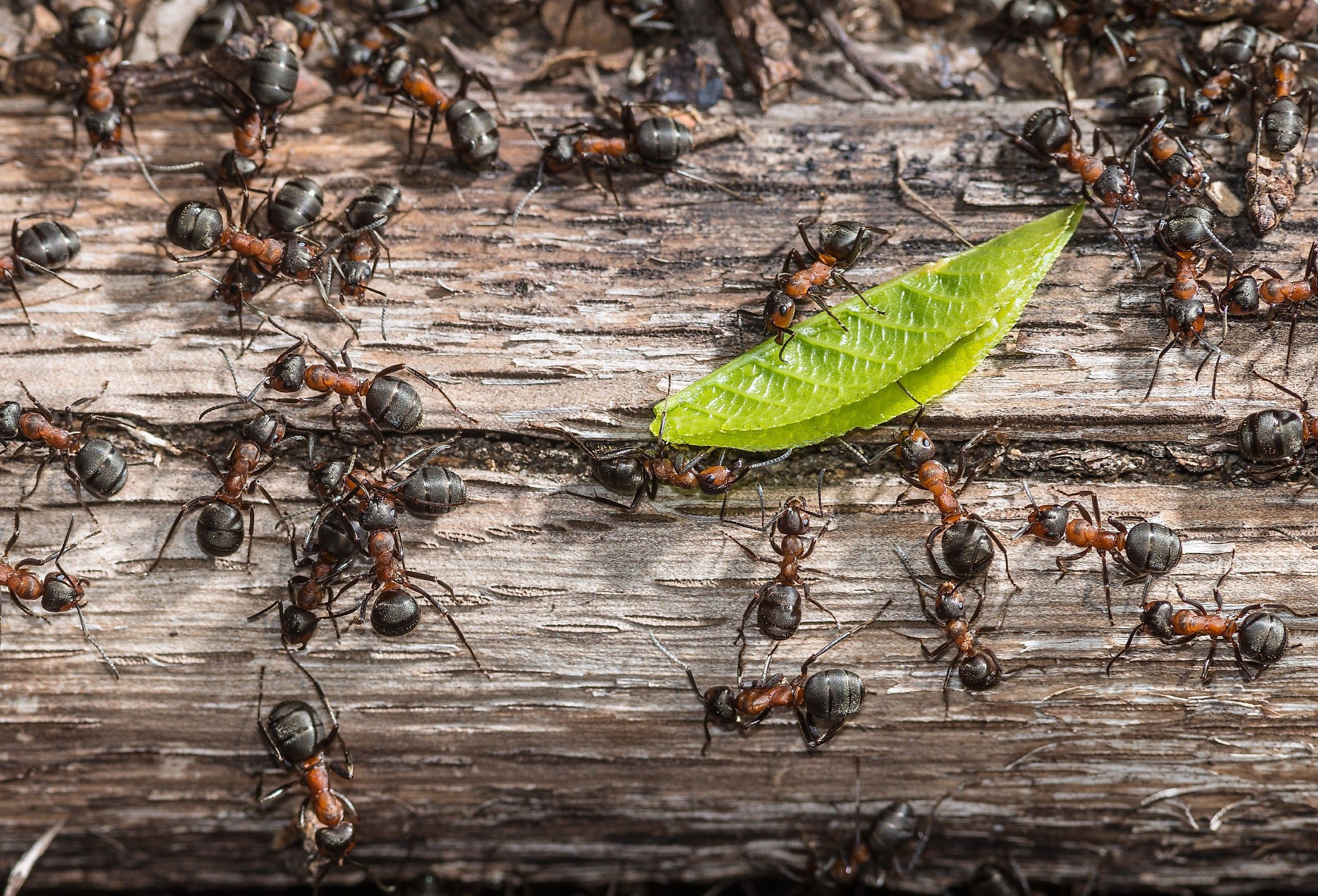
Most Populous Animals On Earth
The web of life on Earth is teeming with myriad creatures, each playing its own role in the grand narrative of nature. In attempting to quantify and compare the populations of different animals, several challenging variables come into play. Populations of individual species are often compared against larger genera or entire orders/classes/families. For example, when comparing humans, a single species, against the many species of dogs within the genus Canis, the assignment becomes subjective.
Additionally, counting populations of certain animals can feel akin to a herculean task. A massive number of species, like reptiles, insects, birds, and rodents, are elusive, highly mobile, or have habitats that make accurate census-taking challenging. However, people are nothing if not persistent; given enough time, they will turn over every rock in the quest to categorize and count all the world's creatures — be they warm-blooded, cold-blooded, or everything in between.
Wild Vs. Domesticated
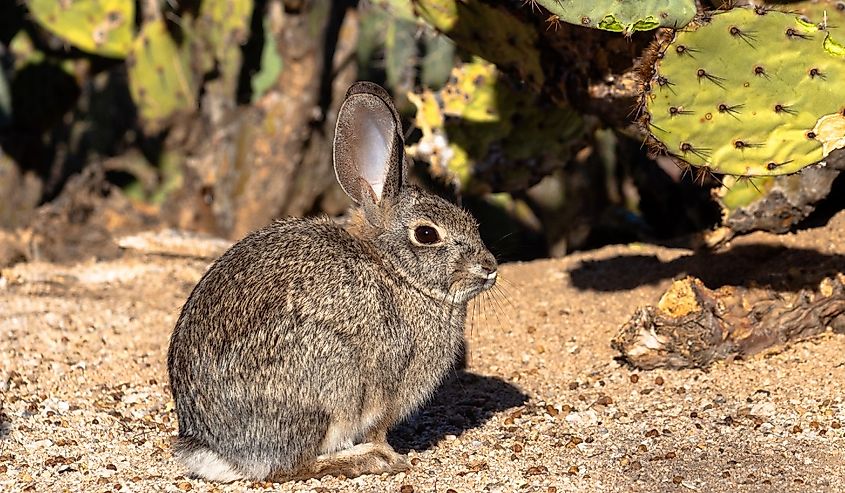
Another variable that complicates the calculations is the fact that wild and domesticated animals have distinct differences; rabbits serve as a prime example. Wild and domestic rabbits are abundant: the domestic population is around 709 million, while wild rabbits are difficult to count and could easily be in the hundreds of millions. Wild rabbits tend to have robust survival skills, adapted for natural habitats, while domesticated rabbits, bred for companionship, often require human care. However, not all rabbit species are populous. The Riverine Rabbit, an endangered species, has a tragically low count of only 250 individuals. This stark contrast shows that despite being under the same genus, domestication, adaptation, and human influence can drastically affect a species' global numbers and survival.
Non-Mammalian Populations
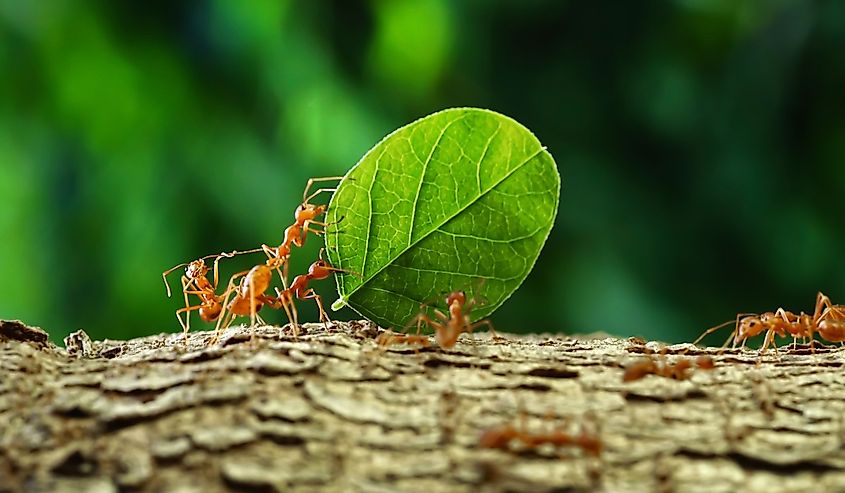
While mammals take center stage because of their size and quantity, non-mammalian invertebrates have proven themselves incredibly successful in adapting to unusual environments. So much so that these competing branches of life easily outnumber our mammalian brothers and sisters.
At the forefront are insects, an enormous group with an estimated total population of 10 quintillion individuals globally. The United States alone hosts a staggering 91,000 species. The sheer variety and ubiquity of insects underscore their critical role in ecosystems around the world. In the chain of nutrition, they are essential to both maintaining the environment and providing for the many predators which depend on them.
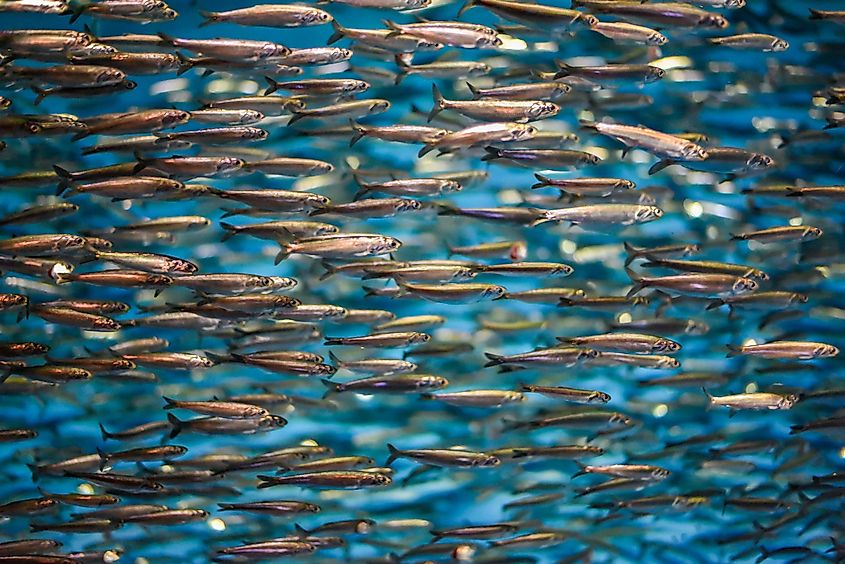
Next in line are fish, with an estimated global population of 3.5 trillion spanning over 32,000 species. These aquatic creatures occupy a vast array of habitats, from the deepest ocean trenches to high-altitude mountain streams.
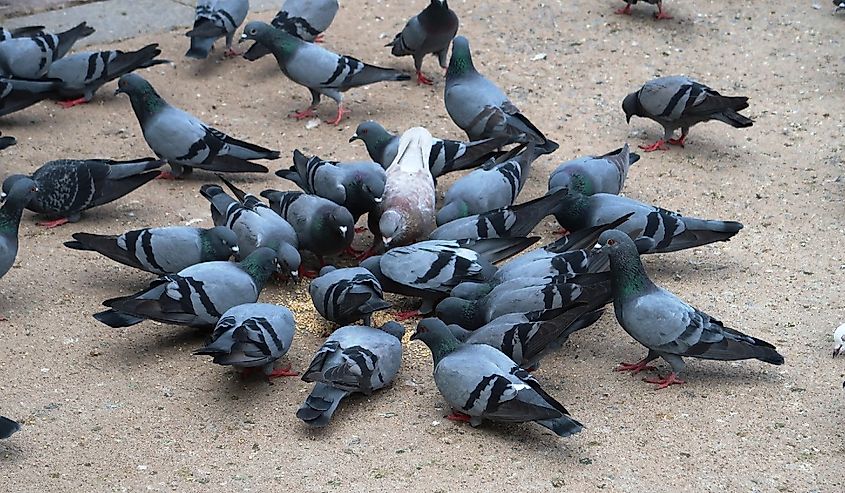
Birds, the custodians of the skies, are estimated at about 50 billion individuals across approximately 10,000 avian species. The ubiquitous Rock Dove, commonly known as the pigeon, alone boasts a population of around 400 million worldwide.
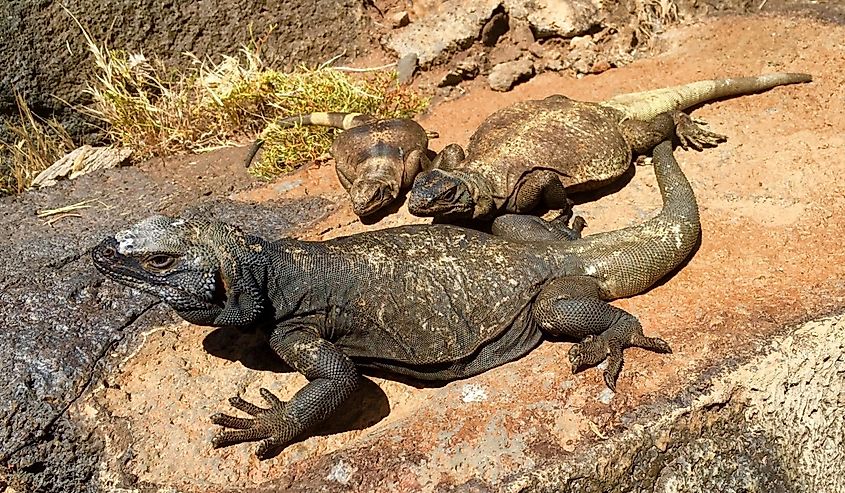
Reptiles, though less numerous, still impress with more than 10,000 species globally. A study focused on the Mojave Desert's ecoregion, spanning 66,830 km², identified a combined population of 82 million for its three most common lizards, hinting at the immense reptilian presence in just a fraction of the Earth's surface.
Sea anemones, which, while they do resemble plants, are more closely comparable with jellies and corals. Many consider them to be animals, despite their stationary existence. Estimates of their total population, in terms of individuals, are scant, but there are over 1,000 known species. Therefore, if you consider the size of the Ocean's unexplored seafloor, the total population could be well into the billions (give-or-take).
Humans
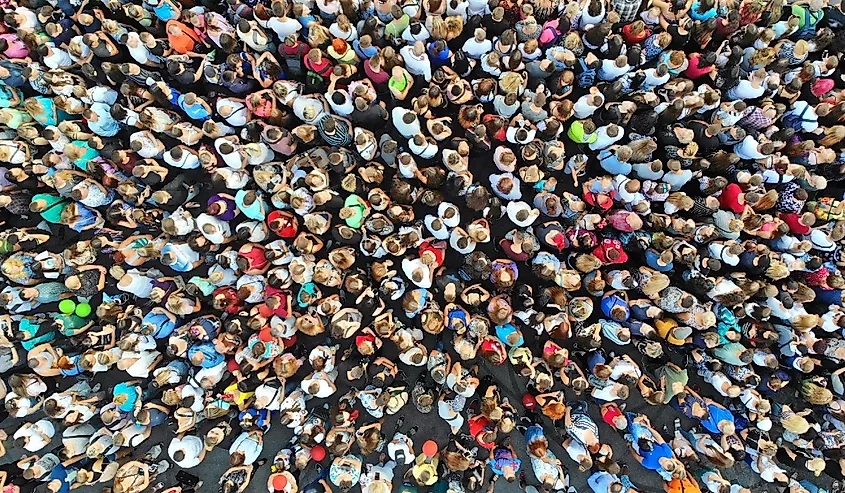
Within the mammalian kingdom, humans unequivocally assert dominance. Their population is a staggering 7.94 billion, making them the most populous mammal on Earth. From freezing arctic landscapes to scorching desert terrains, humans have conquered every corner of the globe. They have built colossal structures, established extensive societies, and made profound impacts on the Earth's surface.
Cattle
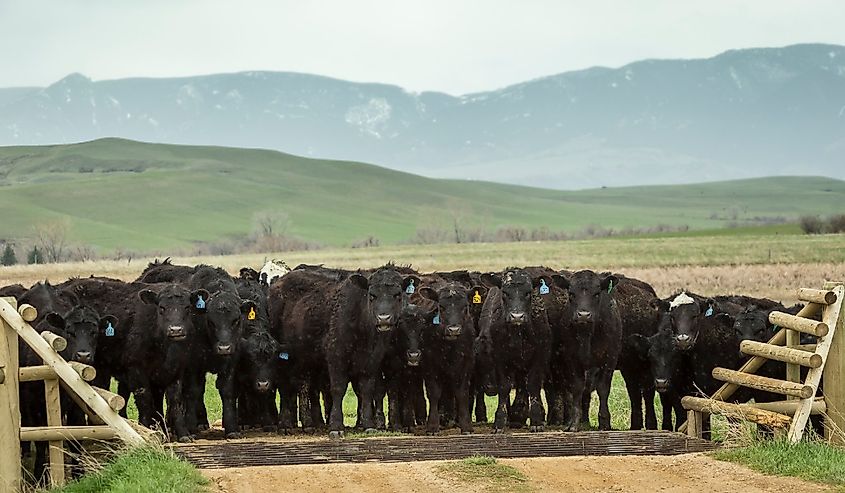
Next on the roster, the cattle population stands strong at around 1.5 billion. Cattle are integral to human societies worldwide, fulfilling a range of roles. They provide meat, milk, and hides, contributing to our dietary needs and industries. Bred on farms from the verdant pastures of Ireland to the vast ranges of Australia, cattle play a monumental part in the global agricultural economy. However, despite human's dependence on these animals, the industries surrounding cattle (which cannot survive in the wild by themselves, having been bred from a now-extinct species) produce an alarming amount of greenhouse gas emissions. Modern domestic cattle predominantly fall under two species, namely Bos taurus, associated with European breeds like Shorthorn and Jersey, and Bos indicus, tied to Zebu breeds like Brahman. Some cattle, like the Santa Gertrudis breed, are a cross between these two species.
Bats
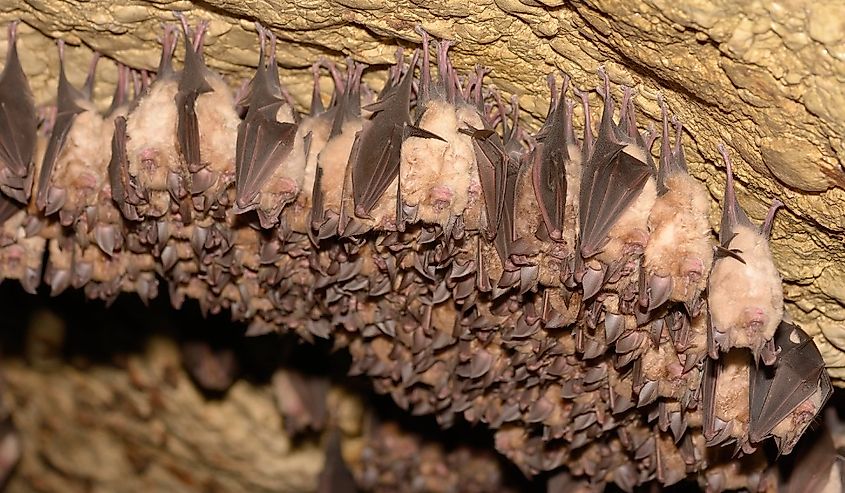
In the realm of successful mammal genera, bats hold a unique distinction. Representing about 20% of all mammal species, bat populations are believed to be in the tens to hundreds of billions. This astonishing figure attests to their ecological adaptability and the pivotal role they play in maintaining environmental balance. Fruit bats and long-tongued bats, key agents of pollination and seed dispersal, alone account for over 2 billion individuals.
Pigs
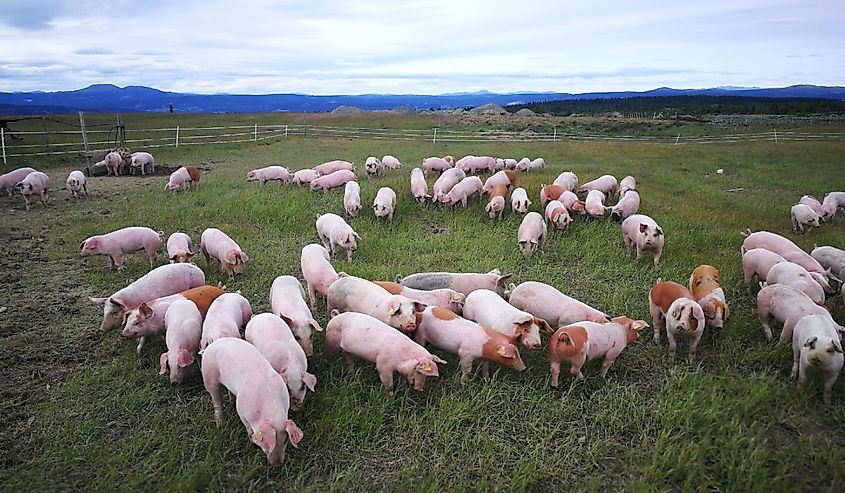
Pigs contribute another significant figure to the mammalian census, with around 1 billion individuals globally. Primarily bred for meat, pigs are a staple of global agricultural systems. Beyond their status as a food source, pigs offer services in other domains, such as medical research, due to their physiological similarities to humans. Furthermore, they are integral to certain specialized fields like truffle hunting. Wild boars also add to the total count, and they have a noticeable, often tense, relationship with human communities around the world. Pigs, with their surprising versatility and utility, underscore the complex relationships between human societies and the animals they depend on.
Sheep

Sheep are another animal deeply connected with human society since the start of agriculture. About 1 billion sheep are spread across the Earth's surface, grazing on different landscapes and providing wool, meat, and milk to people worldwide. Whether in the windy highlands of Scotland or the jagged terrains of New Zealand, sheep have greatly influenced both the physical environment and the economy. They show humanity's long-standing dependence on animal resources and our strong impact on shaping animal populations globally.
Dogs
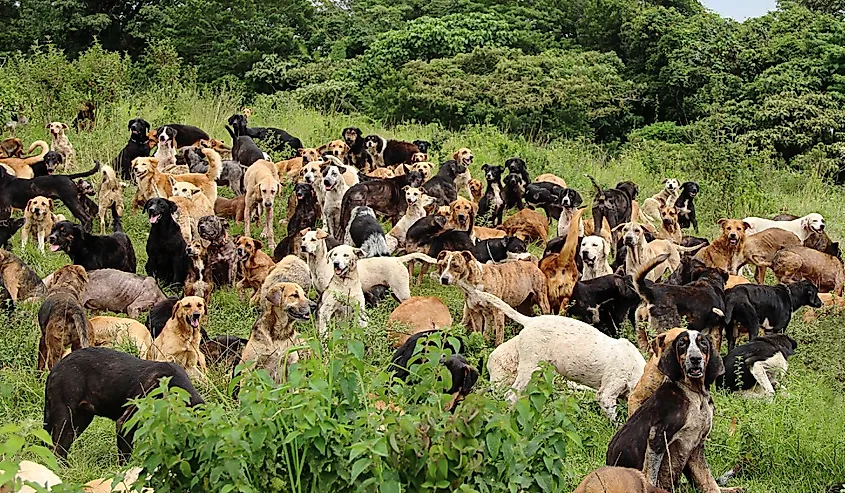
Dogs, commonly hailed as man's best friend, make up an impressive segment of the mammalian population, with nearly 900 million individuals worldwide. These loyal companions have been intertwined with human history since prehistoric times, selectively bred for an array of tasks that mirror the complexities of human society. Dogs have been guards, hunters, herders, guides for the visually impaired, and, above all, cherished companions. Their prevalence testifies to the enduring bond between humans and canines, a relationship steeped in mutual support and companionship that spans cultures and continents.
Goats

With a global population of around 850 million, goats also hold a significant place in the world's mammalian population. They have lived alongside human civilization for thousands of years, providing humans with milk, meat, fiber, and hide. Known for their hardiness and adaptability, goats thrive in a variety of environments, from the steep mountains of the Himalayas to the dry deserts of the Sahara. Their strong presence across different ecological niches highlights their important role in subsistence farming and pastoral cultures, supporting local economies and livelihoods in many parts of the world.
Cats
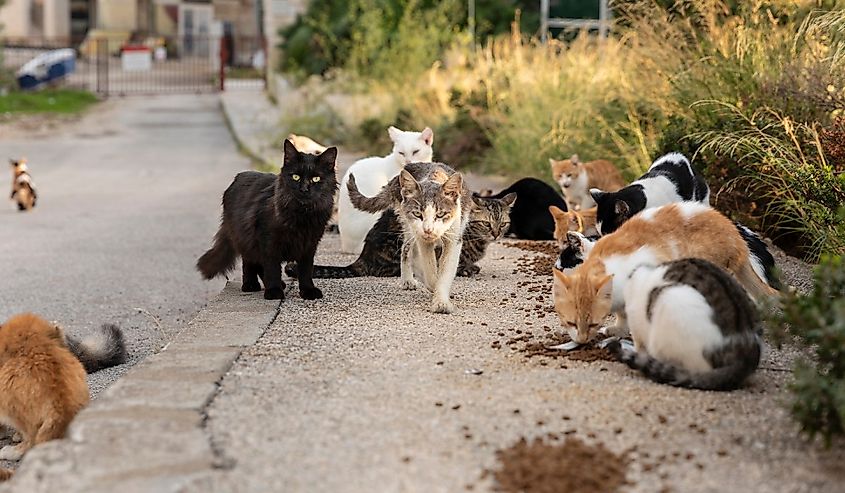
Cats, beloved for their mysterious allure and graceful independence, count about 600 million worldwide. They have inspired everything from ancient Egyptian devotion to modern internet adoration. Cats have been protectors of granaries, companions of sailors, symbols of divinity, and providers of domestic comfort. They have ingratiated themselves in urban environments, contributing to rodent control while simultaneously gracing homes as cherished pets. The widespread presence of cats speaks to their unique duality as both self-sufficient predators and beloved companions, adding a distinctive stripe to the mammalian tableau.
Opossums
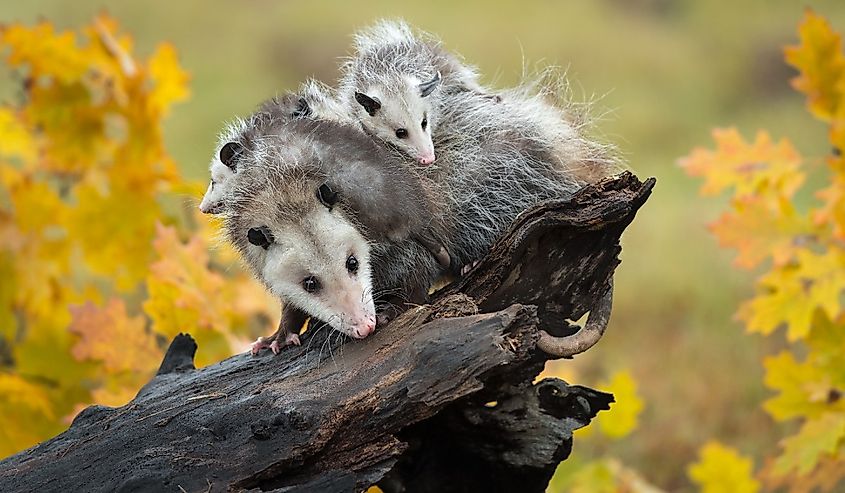
Opossums, the often underappreciated marsupials, boast a population of around 160 million. Inhabiting diverse habitats across North and South America, they are nature's sanitation engineers, helping control pests and cleaning up carrion. Opossums also serve as a vital link in the food chain, providing food for many predators. Their skilled survival tactics (such as playing dead to deceive predators), nocturnal habits, and remarkable adaptability exemplify how life can thrive in every corner of the Earth and how each creature is vital to the surrounding ecosystems.
Horses, Donkeys, and Mules
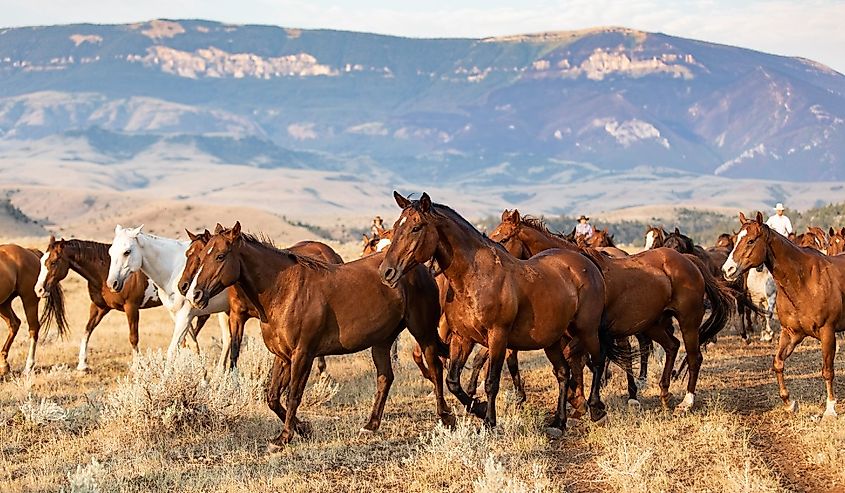
Trotting into the world of horses, there are an estimated 58 million. Synonymous with notions of freedom, strength, and grace, horses have fundamentally shaped human history. They have powered agriculture, participated in warfare, provided transportation, and enriched sports and recreation. Today, they continue to serve in various roles, from pulling carriages to competing in racing, therapeutic riding, and wilderness adventures. The horse's lasting importance globally reflects the vital role animals have played in shaping human societies, symbolizing the strong bond between mankind and the animal kingdom. Additionally, donkeys number about 40 million, and mules have a notable population of 10 million.
This lineup, while comprehensive, remains incomplete. There are still undiscovered species and uncharted territories above and below the surface of the world. Though this might sound daunting, these unknown species may indeed be unique, but they likely represent subtle variations of existing species. This largely stems from the concept of evolution, where species diverge from common ancestors to adapt to specific environmental niches. These differences can range from slight morphological changes to variations in behavior or habitat preferences.
Therefore, our understanding of Earth's biodiversity continues to expand, but even as we uncover new knowledge, these animal populations serve as a reminder, and perhaps a demand, for the importance of conservation. By understanding the extent and distribution of animal populations, humans can better direct efforts to maintain this biodiversity, ultimately preserving the delicate balance of life on the planet.
15 Most Populous Animals On Earth
| Rank | Animal | Population |
|---|---|---|
| 1 | Insects | 10 quintillion |
| 2 | Fish | 3.5 trillion |
| 3 | Birds | 50 billion |
| 4 | Human | 7.94 billion |
| 5 | Cattle | 1.5 billion |
| 6 | Bats | 10-100 billion |
| 7 | Pig | 1 billion |
| 8 | Sheep | 1 billion |
| 9 | Dogs | 900 million |
| 10 | Goats | 850 million |
| 11 | Domesticated Rabbits | 709 million |
| 12 | Cats | 600 million |
| 13 | Opposums | 160 million |
| 14 | Horses | 58 million |
| 15 | White-tailed Deer | 45 million |
Updated: 24/06/2025
